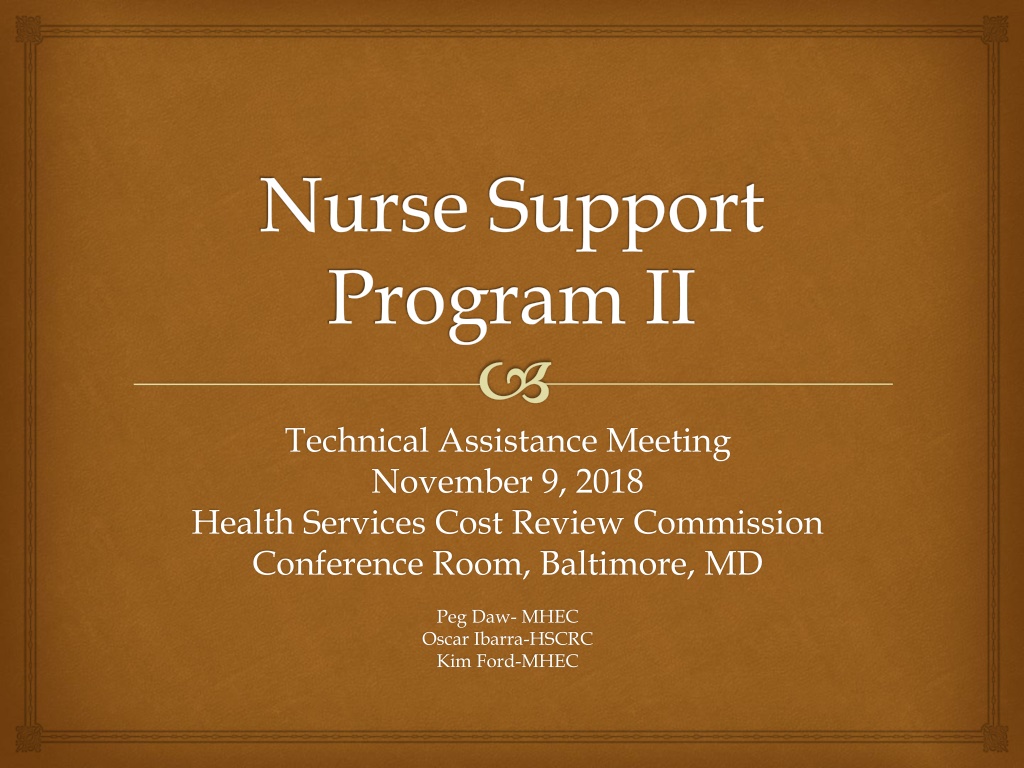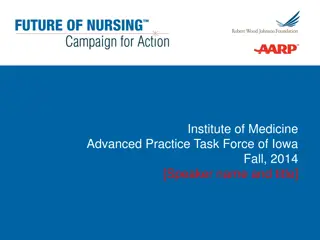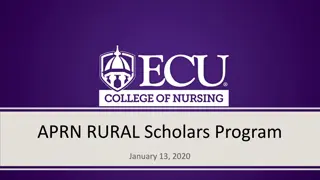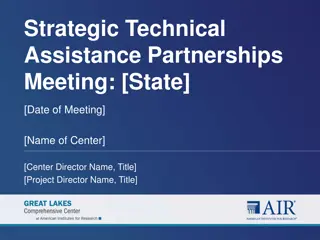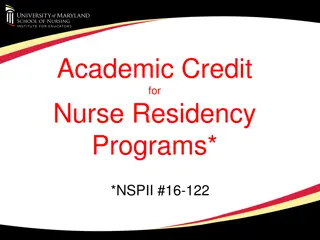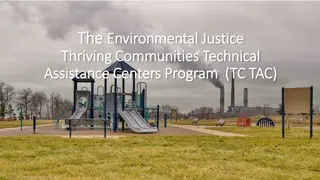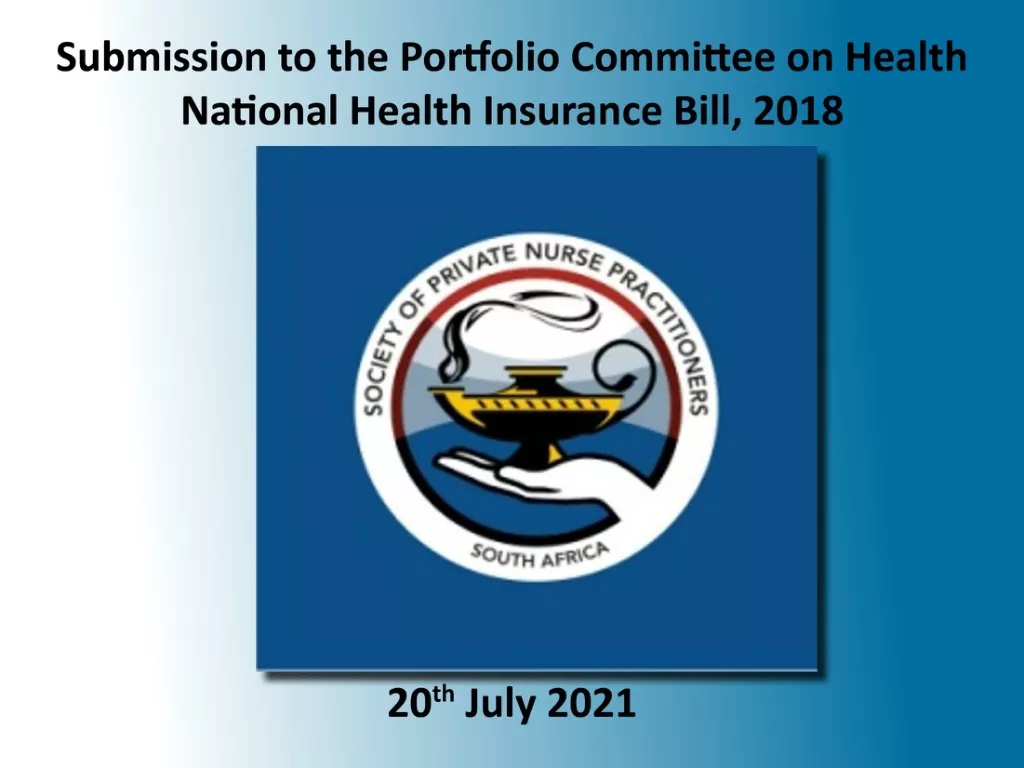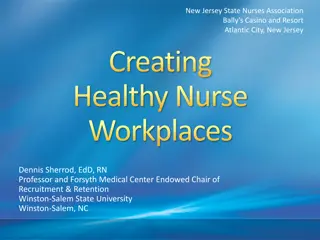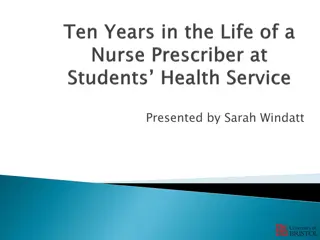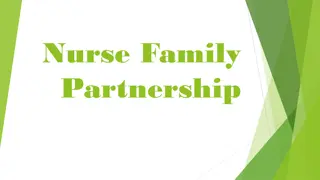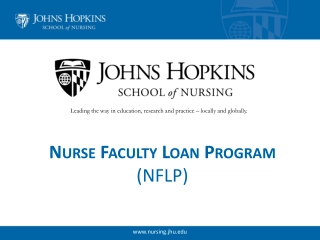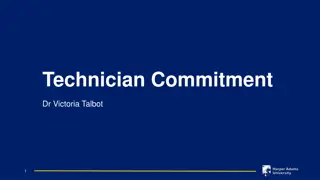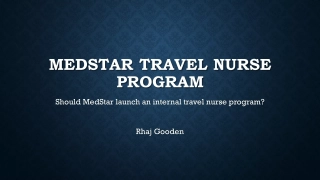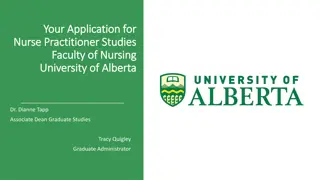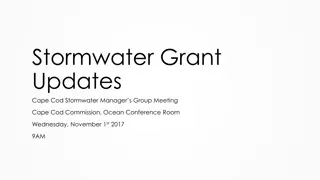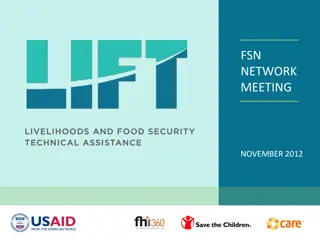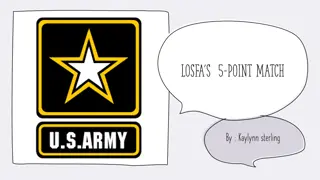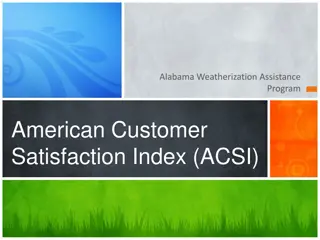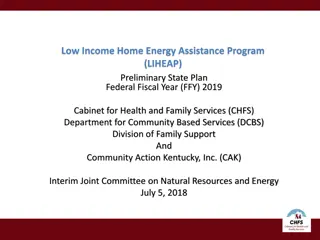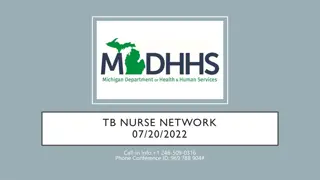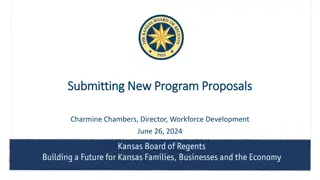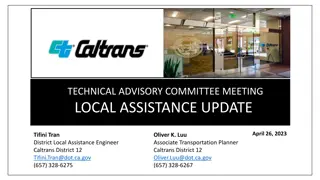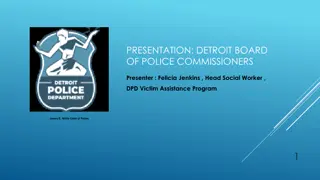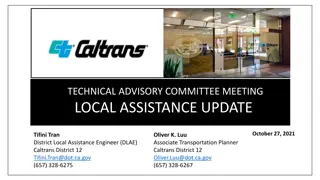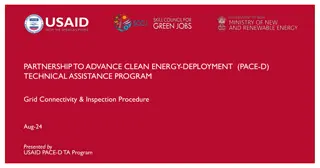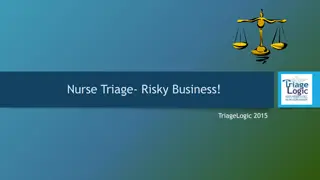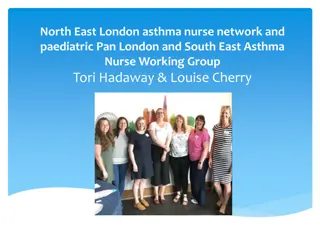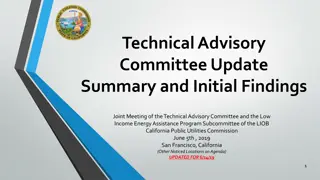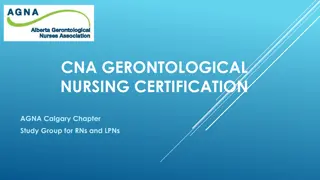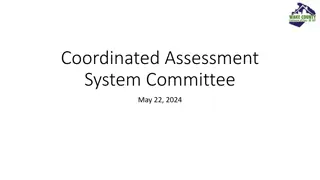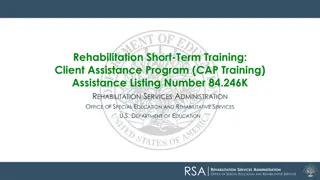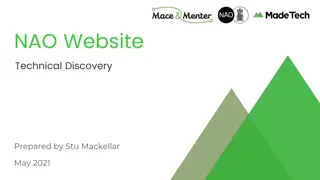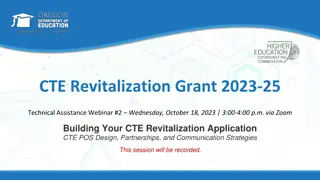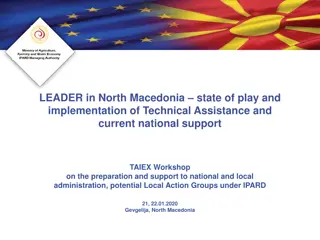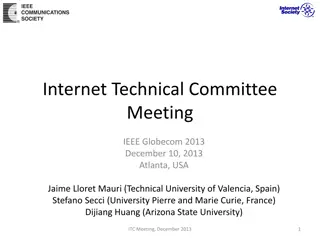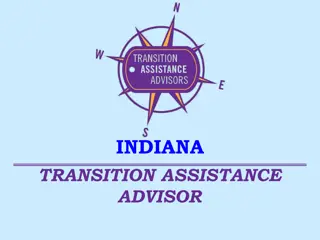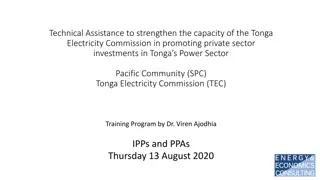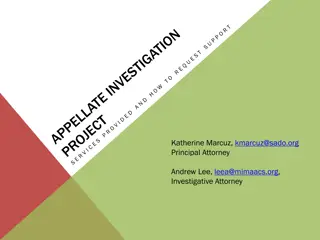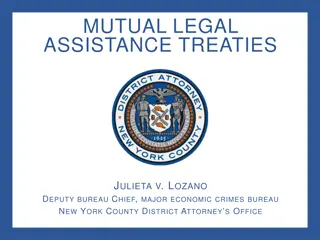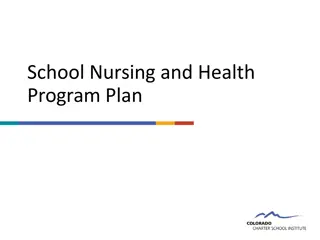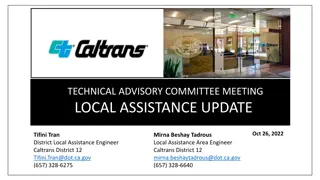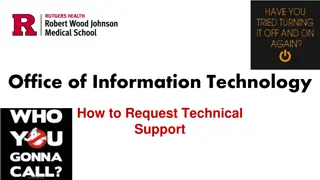Nurse Support Program II Technical Assistance Meeting
Funded by the Health Services Cost Review Commission, the Nurse Support Program II aims to enhance nursing workforce and education in Maryland through programs like NESP and NSP. Legislative authority and Maryland's Model for Total Cost of Care are key components supporting the program's objectives and initiatives.
Download Presentation

Please find below an Image/Link to download the presentation.
The content on the website is provided AS IS for your information and personal use only. It may not be sold, licensed, or shared on other websites without obtaining consent from the author. Download presentation by click this link. If you encounter any issues during the download, it is possible that the publisher has removed the file from their server.
E N D
Presentation Transcript
Nurse Support Program II Technical Assistance Meeting November 9, 2018 Health Services Cost Review Commission Conference Room, Baltimore, MD Peg Daw- MHEC Oscar Ibarra-HSCRC Kim Ford-MHEC
Background Funded by the Health Services Cost Review Commission since 1985, the Nurse Educator Support Program (NESP), the Nurse Support Program I (NSP I) and the Nurse Support Program II (NSP II) have undergirded nursing workforce and nursing education in Maryland over three decades The programs are reviewed, evaluated and renewed by the Commission every 5 years. Next due 2020 Maryland Higher Education Commission administers the NSP II program through nursing program support, faculty awards and scholarships.
Legislative Authority Annotated Code of Maryland, Education Article 11-405. Nurse Support Program Assistance Fund "Fund" defined.- In this section, "Fund" means the Nurse Support Program Assistance Fund. (b) Established; status; administration; investments.- 1. There is a Nurse Support Program Fund in the Commission. 2. The fund is a continuing, nonlapsing fund that is not subject to 7-302 of the State Finance and Procurement Article 3. The Treasurer shall separately hold and the Comptroller shall account for the fund 4. The fund shall be invested and reinvested in the same manner as other State funds 5. Any investment earnings of the fund shall be paid into the fund (c) Composition.- The Fund consists of revenue generated through an increase, as approved by the Health Services Cost Review Commission, to the rate structure of all hospitals in accordance with 19-211 of the Health - General Article. (d) Expenditures.- Expenditures from the Fund shall be made by an appropriation in the annual State budget or by approved budget amendment as provided under 7-209 of the State Finance and Procurement Article (e) Use of money; guidelines.- The money in the Fund shall be used for competitive grants and statewide grants to increase the number of qualified bedside nurses in Maryland hospitals in accordance with guidelines established by the Commission and the Health Services Cost Review Commission. (f) Guideline provision for minority recruitment.- The guidelines established under subsection (e) of this section shall provide that a portion of the competitive grants and statewide grants be used to attract and retain minorities to nursing and nurse faculty careers in Maryland. [2006, chs. 221, 222.] Senate Bill (SB) 1081 was introduced during the 2016 Maryland legislative session with the purpose of deleting the term bedside from the descriptor of nurses in the statutory provision establishing the NSP II. Instead of focusing on bedside nurses, SB 108 allows the NSP II to improve the pipeline of nurses with the skills necessary to keep pace with the rapidly changing health care delivery system. It was passed by both the Maryland Senate and the House and approved by the Governor on April 26, 2016.
Marylands Model Maryland s Total Cost of Care All-Payer Model Under Maryland s current All-Payer Model, approved in 2014, hospitals have successfully reduced unnecessary readmissions and hospital- acquired conditions while decreasing the growth in hospital cost per capita. The new Maryland Model will expand this successful approach across the health care system when it takes effect on January 1, 2019 and will extend through the end of 2023.
Total Cost of Care Model Maryland s current model has already saved Medicare more than $586 million through 2016, compared to national spending, and the new model is expected to provide an additional $300 million in savings per year by 2023 and a total of $1 billion over five years. Nurses are central to the successful implementation of the Maryland Model. HSCRC funds nursing education to reduce hospital costs and maintain a qualified nursing workforce
Strategic Plan for APIN Academic Progression in Nursing (APIN) is key to meeting two of the IOM , MDAC, & NSP II goals: Increase proportion of RNs with BSN to 80% Double the number of doctoral prepared RNs NSP II 18-125 included a Strategic Plan for APIN using Associate to Bachelors (ATB) as proxy.
ATB Focus Groups Two focus groups conducted with the members of the Maryland Council of Deans and Directors of Nursing Programs Focus Group #1. December 8, 2017 Focus Group #2. February 16, 2018 Five themes identified: financial aid, degree completion, advising at multiple education institutions, prerequisites and pipeline
Financial Aid Priority 1: Financial Aid Goal: Develop a state-wide financial model for dual enrollment/admission students Strategy 1: Increase nursing scholarship and loan programs at state level through MHEC NSP funding, nursing organizations, private philanthropic funds Strategy 2: Partner with other professional dual enrollment/admission programs to broaden the base for financial aid solutions
Financial Aid Cont Strategy 3: Investigate how other states with dual enrollment/admission programs are addressing financial aid Strategy 4: Partner with the statewide financial aid officers association to message the need for financial aid to assist seamless academic progression for all students
Degree Completion Priority 2 Degree Completion Goal: Increase the completion rate for BSN degrees for dual enrollment/admission students Strategy 1: Develop a statewide tracking system for all dual enrollment/admission students Strategy 2: Partner with new RN graduate employing agencies to develop ways to support BSN degree completion
Advisement Priority 3 Advisement Goal: Insure seamless academic progression for students Strategy 1: MOU s between institutions include provision for dedicated advisors at both levels of dual admission/enrollment programs Strategy 2: Review SB740 (Implementation of College and Career Readiness and College Completion Act of 2013) for guidance on dual admission/enrollment initiatives (https://www.dllr.state.md.us/p20readinessb740.ppt)
Prerequisites Priority 4: Reduce the number of extra courses students need to meet prerequisites across institutions in order to facilitate academic progression Strategy 1: Develop common core prerequisites and curricula across all nursing programs Strategy 2: Gather information about other state models that have adopted common core prerequisites and curricula Strategy 3: Partner with other state programs with dual admission/enrollment models to share ideas on common perquisites and curricula
Pipeline Priority 5 : Recruit students to nursing at the secondary school level Strategy I: Develop partnership with the secondary education health programs (Academy of Health and Project Lead the Way: Biomedical) Strategy 2: Partner with the secondary school counselors/advisors to develop an informational and marketing campaign to students in middle and high school (Maryland School Counselor Association http://www.mscaonline.org)
Certified Nurse Educators National League of Nursing provides Certified Nurse Educator and Clinical Educator credentialing to demonstrate excellence in nursing education Professional development for faculty is expected to be embedded in NSP II grant proposals. This demonstration of faculty and clinical educator s certification is an initiative of the NSP II and supported across all projects and grant activities.
CNE Attendees Responses NLN CNE Workshops were held in January 11, 2018 and March 8, 2018 with Dr. Diane Billings presenting preparatory materials for the CNE examination, in Columbia, Maryland Are you a full-time faculty? Where are you employed? Did you find it beneficial? Were you satisfied with the speaker? Will you take the exam in 6 months? Would you recommend to colleague? Were you satisfied with food/location? Do you have support of Dean/Director? Are you confident to test now? Have you ever had CNE or tested?Yes (1- CNE), Yes (7 attempted), No (71) Yes (68) No (10) Community College (36) University (42) Yes (76) No (3) Yes (67) No (9) Yes (62) No (14) Yes (75) No (3) Yes (75) No (2) Yes (74) No (4) Yes (73) No (6)
CNE Report to Deans/Directors Report to Deans/Directors on 6/15/18 Summary: 79/120 participants responded (66% or 2 out of 3). The vast majority (~95%) found it beneficial, were satisfied with the speaker, would recommend it to their colleagues and intend to take the certification examination by September. 2018. We had a fairly even split of community college (46%) and university faculty (53%). The two areas that we should address are simple: more water and tea at the events and increased confidence that the faculty have both the professional and financial support of leadership. The workshops reached the target audience- faculty who want to pursue the CNE credential (78/79). Deans/Directors support additional CNE Workshops planned for Fall, 2018. More information at www.nursesupport.org
CNE Credential Reporting As an NSP II Faculty focused initiative, please report on the Mandatory Data Tables (MDT) and in a short note how many faculty were nominated for the CNE Workshops and how many completed the examination successfully for the CNE credential. We are including this measure in our program evaluation process and need your help. Even if we survey or contact you/your nominees, it needs to be part of your reporting to ensure we capture the movement in the increase in faculty with CNE s.
Nurse Educator Teaching Certificates- Free through NSP II UM SON Teaching Certificate JHU SON Nurse Educator Certificate Option For more information: See Hal and Jo Cohen Graduate Nurse Faculty Scholarship at www.nursesupport.org
Dissemination Examples Dissemination activities: Maryland Nurses Association Convention, October 5, 2017 (2 poster presentations): Cecil-Harford Academic Progression in Nursing Initiative: Developing Professional Nurses to Promote Lifelong Learning and Cecil- Harford Academic Progression in Nursing Initiative Organization for Associate Degree Nursing Convention, November 16-19, 2017 (poster presentation): Cecil- Harford Academic Progression in Nursing Initiative received first place poster award UMSON Institute for Educators, Teaching in Nursing: What s Now, What s New, What s Next? March 26, 2018 (podium presentation): Incorporating Professional Development Activities into Nursing Curriculum to Promote Professional Socialization of Nursing Students Nursing Education Research Conference, April 19-21, 2018 (poster presentation; co-authored by Elizabeth Crusse from Towson University): Associate-to-Bachelor s (ATB) Option: A Collaborative Practice Model Maryland Action Coalition summit, May 21, 2018 (poster presentation; co-authored by Elizabeth Crusse from Towson University): Associate-to-Bachelor s (ATB) Option: A Collaborative Practice Model Nurse Support Program II Project Directors meeting, June 14, 2018 (podium presentation): Let s take a dive into the data! Upcoming planned dissemination: Organization for Associate Degree Nursing Convention, November 9-11, 2018 (poster presentation; co-authored by Elizabeth Crusse from Towson University): A Collaborative Practice Model for Academic Progression in Nursing Nurse Tim (nursetim.com) webinar, October 10, 2018: Financial Aid: The Linchpin for Academic Progression Partnerships https://nursetim.com/webinars/%C2%A0Financial_Aid_The_Linchpin_for_Academic_Progression_Partnerships Abstracts and copies of presentations are attached separately. (NSP II 16-111. Cecil-Harford APIN)
Tip-1 When submitting reports, send one packet with everything required. We have limited staff and many projects. Please help us streamline the process. Examples: Annual and Final Budget Summary Reports require an original signed budget summary with the reports. Do not send it under separate cover with a copy in the Report. Please send it in with the report and on time. If a refund is required, send a note saying when you plan to process it, or did process it and acknowledge the refund is required.
Tip- 2 When submitting requests for project changes or Annual/Final reports, please use the Project Directors email. All communications should come through the recognized Project Director on the grant. Dissemination is required annually. (MANDATORY) Send All Reports- both narrative and budget- together from the Project Director- both e-file and hard copy. Use the grant NSP II xx-xx number and title in the email, to assist staff in tracking communications
Tip-3 Mandatory Dissemination is required annually and must be in each Annual/Final Report with clear documentation of event. Awardees are expected to participate in annual statewide conferences and programs offered through the Maryland Action Coalition (MDAC), the Maryland Nurse s Association and the Maryland Organization of Nurse Leaders (MONL), including their Nurse Residency Consortiums. Professional nursing organizations are charged with leading important IOM Initiatives at the state level. Mechanisms are in place to bring awardees together to share best practices and statewide progress towards all IOM recommendations. As part of these meetings, participants will share interim measurements and progress relevant to their grant(s). Institutions are expected to include attendance opportunities and budgetary allocations through participant support costs within their grant proposals for grantees/partners to participate. Mandatory Dissemination Activities are important for synergy and collaboration to demonstrate the return on investment in programs, nurses and faculty. ( RFAs, FY 2016-2020)
Tip-4 Electronic File Naming format Help us by using the format so we don t have to rename Please name them in this format: NSP II 18-127 Annual Report . 6.30.18 NSP II xx-xxx Final Report 7.1.18 NSP II xx-xxx Annual Budget Date NSP II xx-xxx Project Amendment Date Etc
Nursesupport.org NSP II Website additions: https://nursesupport.org/shared- resources/faculty-development/ Doctoral Education for Nurse Faculty July 9, 2018 Workshop-provided participants with information needed to select a doctoral program that best meets their career goals and to prepare for applying for admission Certified Nurse Educator Workshops January 11, 2018, March 8, 2018, November 12, 2018-an intensive, comprehensive review of the major content areas of the test blueprint. It is designed to help potential candidates assess their level of readiness and identify practice domains where further study may be needed Nurse Faculty Job Fairs- March 7, 2018, October 1, 2018 Meet nursing representatives from Maryland academic institutions, gain information about the Nurse Faculty Role, & learn more about Maryland s Graduate Nursing Faculty Scholarship Service
FY 2020 Proposals Proposal cover sheet must have original signature from President, Vice President or Dean. A signature from other staff ex: Grants or Contract Manager is not acceptable. Grants will be funded for a period of one (1) to three (3) years. Planning grants are limited to two (2) years and statewide resource grants are limited to one (1) year. Grants funded in FY 2020 will begin on July 1, 2019 and end no later than June 30, 2022. MOUs and Assurances must be signed by President, Vice President or Dean. Other staff signatures are not acceptable.
FY 2020 Proposal Only Minor Changes for clarity Same main initiatives Use Resource grants if you need additional professional development funds for CNEs Clinical Simulation funding completed in FY 2019
